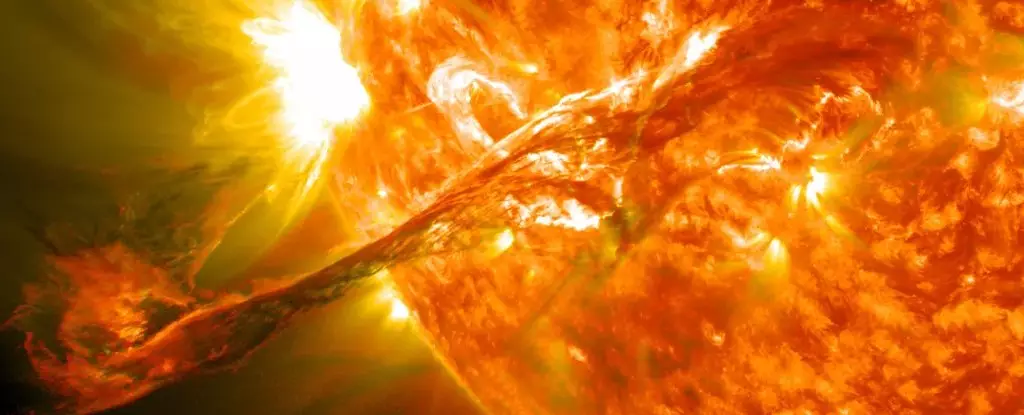The Sun, from a distance, may seem calm and serene, but a closer look reveals a different reality. The recent solar activity has defied the expectations of astrophysicists, including Andrew Gerrard from the New Jersey Institute of Technology. Solar cycles, which typically occur every 11 years, involve fluctuations in solar activity from minimum to maximum. The current cycle we are in is showing heightened magnetic activity, leading to cooler pockets on the solar surface known as sunspots.
The increased number of sunspots has been a cause for concern as they are associated with powerful X-class solar flares and coronal mass ejections. These phenomena can have serious implications for Earth, including radio blackouts, power grid outages, disruption of GPS navigation, and potential damage to satellites. The ability to predict solar storms is crucial for better preparation and mitigation of these risks.
When solar flares and coronal mass ejections occur, they release high-energy particles into space at incredible speeds. If these particles interact with Earth’s magnetic field, they can trigger geomagnetic storms. While these storms can produce stunning auroras, they can also disrupt radio communications, GPS systems, and even lead to power outages. Recent geomagnetic storms have caused radio blackouts on multiple continents and grounded flights due to communication disruptions.
In addition to disruptions on Earth, solar activity poses risks to spacecraft in orbit. The increased drag caused by high-density particles in the upper atmosphere can lead to the descent of satellites. In some cases, geomagnetic storms have even contributed to the falling of satellites from orbit, resulting in potential damage and reduced service. The growing reliance on satellite technology has heightened our vulnerability to the effects of solar activity.
Scientists are closely monitoring the solar activity as we approach the peak of the current solar cycle, known as solar maximum. Predictions suggest that this peak will occur in the second half of 2025, marking a period of intense solar activity. While this cycle’s solar maximum is expected to be stronger than initially thought, it is considered within the historical average. However, the increasing dependence on satellite technology makes us more susceptible to the consequences of solar storms than ever before.
The Sun’s unpredictable behavior and heightened solar activity have implications reaching far beyond the confines of our solar system. By understanding and preparing for the potential risks associated with solar flares and geomagnetic storms, we can mitigate their impact on Earth and safeguard our technology and communication systems. As we continue to study the Sun’s activity, ongoing research in this field is crucial for predicting and responding to future solar events.


Leave a Reply